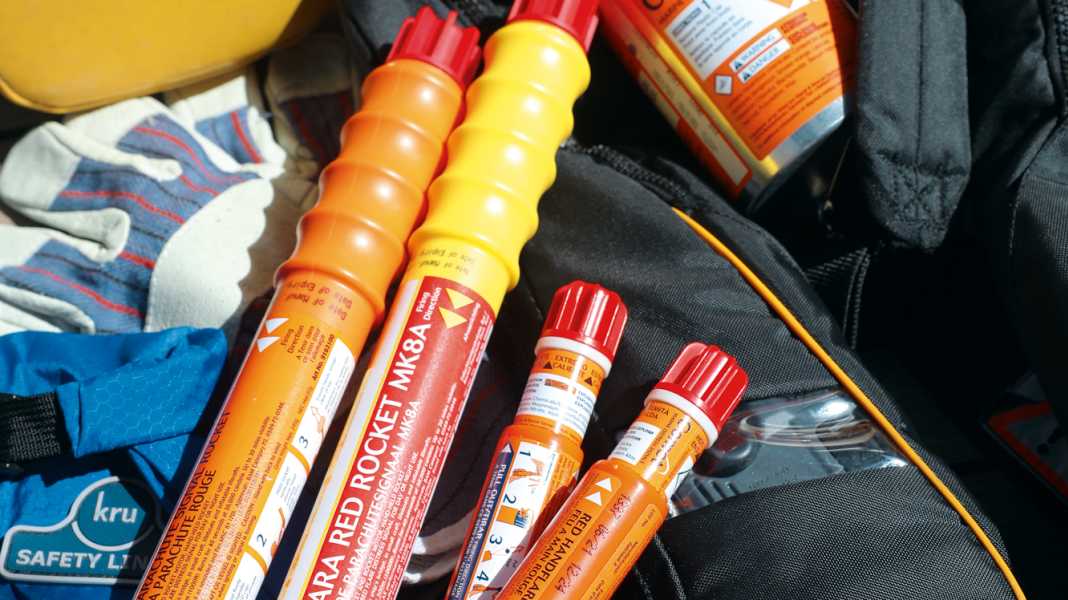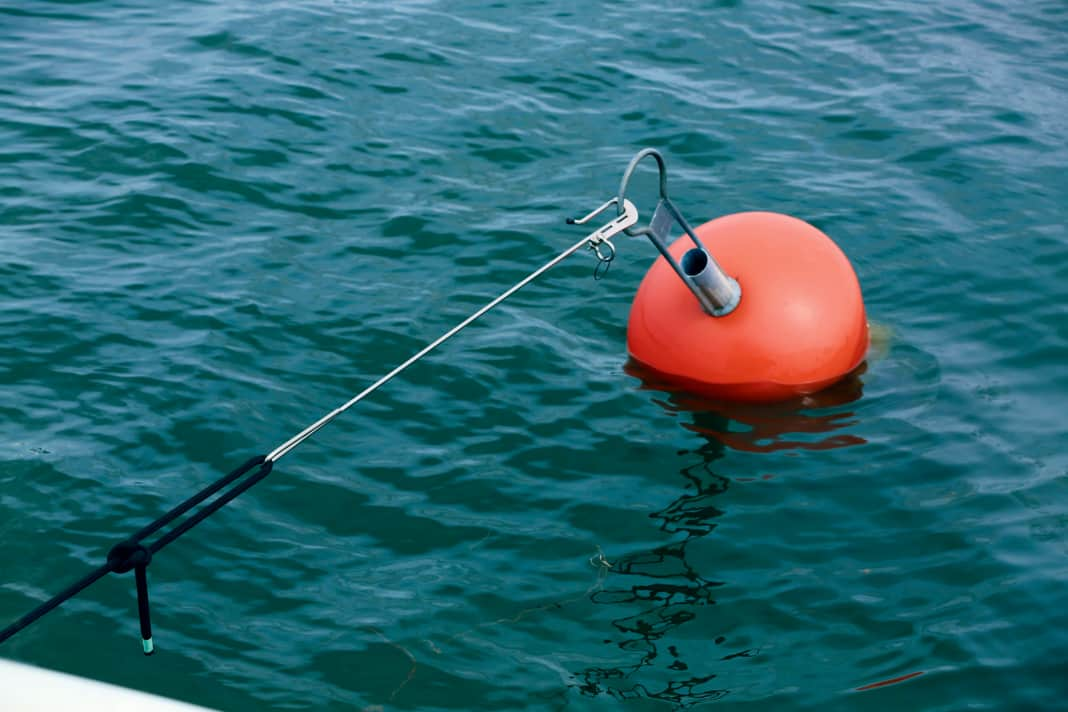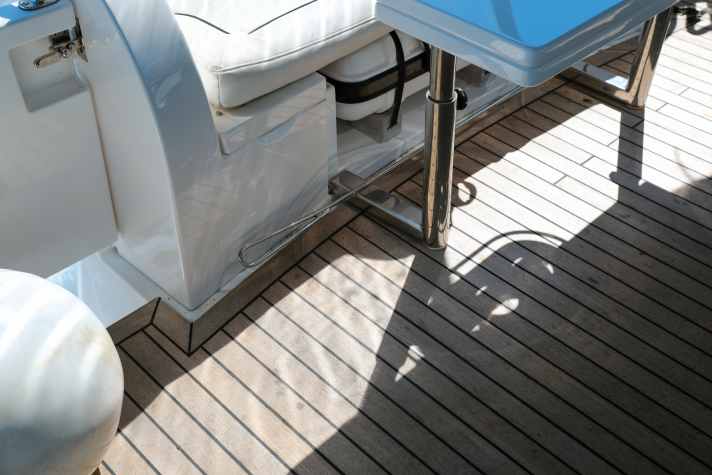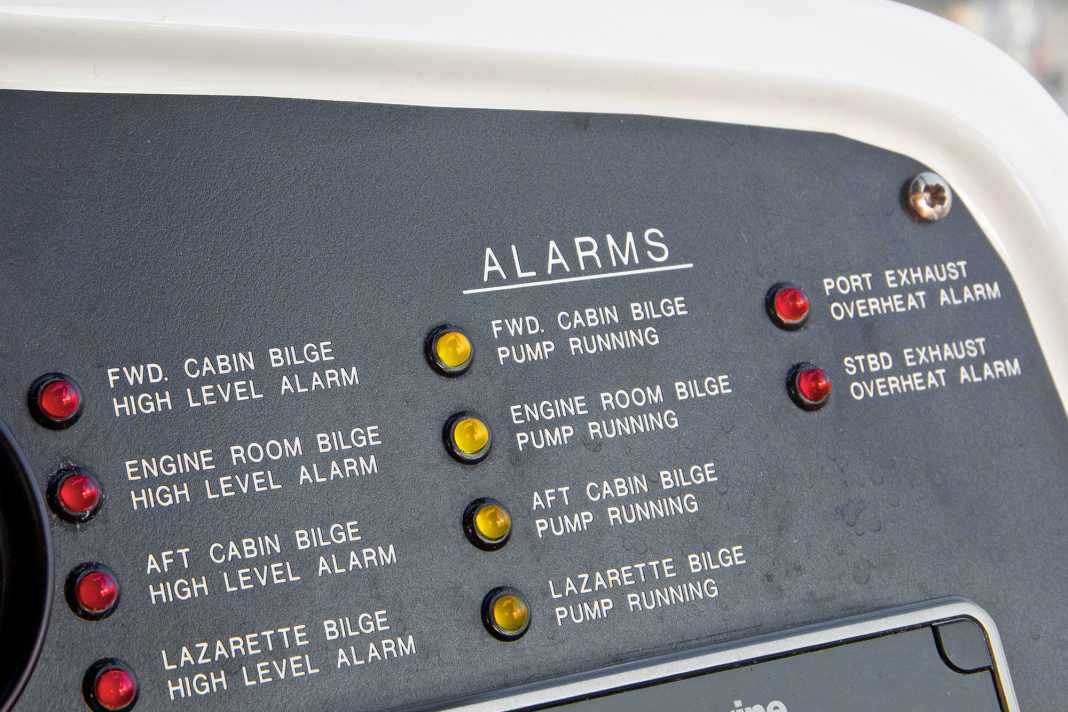
When it comes to safety on board, many factors play a role, regardless of the area you are travelling in or how long a trip is supposed to last. Sudden challenges can occur in any conditions, even when you least expect them. This means that both boat and crew should be as well prepared as possible in every situation. This relates to planning in advance, the level of experience of the crew and the appropriate allocation of each person according to their knowledge, as well as following the rules of good seamanship underway. The responsibility for ensuring that all these variable components for a safe journey are guaranteed in the best possible way naturally lies with the skipper.
The same applies to the set size in the area of equipment and fittings. No compromises should be made here. In addition to the technically flawless condition of the individual components, it is not only crucial that the versatility and performance are right, but also that the crew can use them correctly in case of doubt. Of course, you don't necessarily need a radar if you are only travelling inland. And a fishing boat rarely has room for a life raft. Nevertheless, there are things that are mandatory and which are discussed in the next section. If the safety equipment is more extensive, all the better! Because a good feeling of safety also means that you can really enjoy your time on the water in a relaxed manner.
Safety: personal equipment
By far the most important part of every crew member's safety equipment is the correctly fitted lifejacket, ideally with a crotch strap. The situations in which a person can fall overboard and a lifejacket can prove its worth are endless - one wrong step, one unexpected wave is enough to lose your balance. In the harbour, in the lock chamber or on the high seas, on the jetty, at anchor or at full speed. If you fall uncontrollably into the water from a certain height, you can not only lose your bearings, but sometimes even lose consciousness - a life-threatening situation. Faint-proof automatic waistcoats, which activate and inflate automatically, provide protection even in this case by turning the person through the arrangement of their buoyancy chambers so that at least the head remains above water.
In addition to the lifejacket, there are a number of other safety aspects that are important for the health of the crew: Clothing must be appropriate for the area and the weather and be able to fulfil appropriate protective functions, for example in strong sunlight, wet or cold conditions. Sturdy footwear - especially when working on deck - is also essential. If you have to move quickly, a sudden unfortunate injury to a bare foot caused by edges or fittings or even a stumble can quickly disrupt the entire manoeuvre and therefore safety on board. Equally important are sunglasses, which also provide wind and splash protection for tear-free vision at high speeds, and suitable headgear. You should also apply sunscreen (even when it is slightly cloudy, the surface of the water still acts like a mirror) and, if necessary, products to combat dry skin. In any case, there must be sufficient drinking water on board. Take special care to ensure that children are properly equipped at all times.
Safety: the equipment for the boat



The EU Directive 2003/44/EC sets out basic safety requirements for the design of recreational craft. However, there are no regulations for safety equipment for non-commercial use in this country, only official recommendations based on the four directive categories A (formerly "high seas") to D (formerly "protected waters") and the corresponding areas of use.
For categories A, B, C and D, approved position lighting is suggested as a safety requirement, as well as the flags "N" and "C" as simple visual distress signals and a red flag inside (mandatory), shut-off valves for fuel tanks, Anchor (which must always be easily accessible and ready for use), tools, outboard ladder, first aid kit, ABC powder extinguisher and fire blanket, smoke detector, hand lamp, fog horn, hand bilge pump, bailer, towline, boat hook, throwing line, binoculars, depth sounder, life jackets, life ring, smoke signal (orange).
In addition, for categories A, B and C only, sea railings and spare anchors, leak sealing material, radar reflector, bilge pump, magnetic and bearing compass, log, GPS, navigation equipment, chart plotter with up-to-date software, classic paper charts and nautical manuals for the area, safety harnesses, parachute rockets, hand flares. In addition, for categories A and B only: drift anchor, sound signalling system, bell, VHF radiotelephone system with GMDSS and a sufficiently dimensioned life raft. Finally, for category A only: a sextant for navigation and a distress beacon (EPIRB).
Which additional aids are useful?
However, many of the items of equipment that are only proposed for the "higher" categories have long been found on other boats. This applies, for example, to electronic navigation equipment and VHF radio. However, some items of equipment are not mentioned in this list of suggestions - perhaps because their presence is not only good seamanship, but also common sense. These include lines in sufficient length, quantity and good condition, as mooring lines or for other purposes, as well as fenders of the right size. If you do not have adequate railings, you should at least make sure that the deck surface is non-slip and that there are easily accessible, solid handrails or handles. For manoeuvres in particular, the foredeck must be safely accessible at all times on both small and larger boats; the width and condition of the side deck are the decisive criteria here. Ladders also contribute to safety on low pontoons with a high freeboard. However, they must be suitable for the respective location on board and be well secured.
Also helpful: a dinghy that is at least equipped with oars. It's not just full-sized dinghies in their own davits that count - even a small inflatable boat can make all the difference when it comes to safety. And a model with an inflatable floor can also be set up quickly and easily on board. Incidentally, outboards are not only an issue in connection with dinghies; as auxiliary engines, they can also keep larger cabin cruisers manoeuvrable if the main drive fails. Yachts designed for long journeys in particular, such as trawlers, are often even equipped with an additional permanently installed engine as a get-home system for this case. Speaking of outboards: the quick-stop line is also part of the safety equipment. Attached to an arm or leg, it should be mandatory even on short trips, regardless of whether the boat only has tiller steering or a proper steering position with fixed seats and regardless of whether you are travelling alone or with several people.
The lifejacket



Buoyancy aids have a buoyancy of at least 50 newtons (N) in accordance with the European standard series DIN EN ISO 12402. They are light and comfortable to wear, but are only suitable for use near the shore or coast with a quick prospect of rescue. The wearer must be able to swim, the aid only provides support.
Life jackets (from 100 N) offer more buoyancy and are sufficient for an average adult to be able to wait for help in sheltered waters. However, the common solid models in particular are less comfortable to wear due to the size of the buoyancy chamber.
Life jackets (from 150 N) are also power-safe and turn a person into a safe swimming position in the water after automatic activation, which is maintained even if the person does not move. They are intended for general use in coastal and sea areas and are therefore widely used by recreational boaters.
Life jackets (from 275 N) are the most powerful class and also work with heavy or air-filled clothing. They are usually somewhat bulkier than the 150-N class. For the high seas and extreme conditions.
What is located where

Even in emergency situations Keeping an overview on and below deck is particularly challenging for those who are not on board so often and do not know every locker and storage compartment. Even after a good briefing, crucial details can be forgotten. A stowage plan for the most important safety equipment, which can be quickly produced, copied and adapted, helps the entire crew to find the rescue equipment in a clear way when it is displayed in a central location. In the picture above, the life raft is located in a special recess under the bench seat on the aft deck. This is actually a practical storage location, but it can be overlooked if it is not known. The stowage plan is also suitable for going through the complete equipment with the crew.
You have to keep an eye on that:






Pyrotechnics
Smoke signal orange For use in emergency situations during the day. The container is floatable and therefore well suited for marking a position (such as a life raft). The signal burns for at least three minutes.
Hand torch red It can be used day and night and even burns under water for one minute. Hand torches are now also available as powerful electronic versions with LED or laser lighting technology.
Parachute rocket red It can also be used day and night. After launch, the rocket rises to an altitude of 350 metres. The burn time on the parachute is then 40 seconds.
ATTENTION! A certificate of competence is required for the purchase and use of class T2 pyro distress signals. The expiry date must also be observed.
Sea charts
Digital nautical charts for plotters or apps on mobile devices have long been a practical standard on board for many skippers. However, care must be taken to ensure that the chart corresponds to the latest version and also covers the entire area required.
Paper cards as recreational craft charts or classic nautical charts are still mandatory - naturally also in the latest available version. They are the only way to ensure safe navigation in the event of flat batteries or software and hardware failure.

